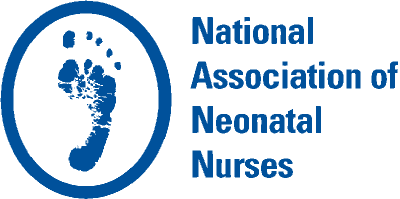Special Interest Group Update
In each issue, one of NANN’s special interest groups will share information in their area of focus.
Persistent Pulmonary Hypertension of the Newborn
By Julie Williams, DNP NNP-BC CRNP
The incidence of persistent pulmonary hypertension (PPHN) in the United States is 0.4–6.8 per 1000 live births (Lakshminrusimha & Keszler, 2015). Even with the many advances in the management of infants with PPHN, the mortality rate for moderate-to-severe cases remains high at approximately 10% (Fuloria & Aschner, 2017). Long-term morbidities associated with PPHN, including neurodevelopmental impairment, can yield lifelong difficulties. Up to 25% of the infants with PPHN have significant neurodevelopmental impairments at 2 years of age (Fuloria & Aschner, 2017).
In an analysis of the North American Pediatric Pulmonary Hypertension Network Registry (2014–2018), racial variability was noted among the prevalence of certain pulmonary hypertension subtypes and survival outcomes. Among neonates, PPHN and bronchopulmonary dysplasia were more prevalent among Black neonates, and congenital diaphragmatic hernia was more prevalent among White neonates (Ong et al., 2019). Higher mortality risk was also noted among Black neonates, primarily because of the increased risk for mortality in infants with lung disease–associated pulmonary hypertension.
Definition
PPHN is an illness characterized by acute respiratory depression from the continued elevation in pulmonary vascular resistance (PVR) and pulmonary artery pressure yielding a right-to-left shunt across the patent foramen ovale and patent ductus arteriosus, decreased pulmonary perfusion, systemic hypoxemic respiratory failure, acidemia, and lactic acidosis (Wilson, Snapp, & Walters, 2020). It occurs when there is a failure of a normal circulatory transition after birth.
Pathophysiology
The underlying pathophysiology of PPHN falls into three categories. The first is characterized by the abnormal constriction of normal pulmonary vasculature as a result of lung parenchymal disease, as seen with meconium aspiration syndrome, respiratory distress, or sepsis (Fuloria & Aschner, 2017; Steurer et al., 2019). The second category is attributed to the remodeling of the pulmonary vasculature with normal lung parenchyma, known as idiopathic PPHN (Fuloria & Aschner, 2017; Steurer et al., 2019). The third category is attributed to hypoplastic vasculature, as seen in infants with lung hypoplasia resulting from congenital diaphragmatic hernia or oligohydramnios (Fuloria & Aschner, 2017; Steurer et al., 2019).
Risk Factors
PPHN was previously known as a disease among term infants; however, it is now known to affect preterm infants as well. Infants born to mothers with asthma, diabetes, and obesity have increased risks of developing PPHN (Fuloria & Aschner, 2017). Male infants; infants delivered before 37 weeks gestation, after 41 weeks gestation, or by C-section; and infants who are small or large for their gestational age are also at risk. In preterm infants less than 33 weeks gestation, prolonged rupture of membrane, fetal growth restriction, and oligohydramnios are risk factors for early PPHN (Fuloria & Aschner, 2017; Lakshminrusimha & Keszler, 2015).
Diagnosis
Neonates born with labile or profound hypoxemia, a difference in saturation, and a difference in partial pressure of oxygen (PaO2) between the preductal and postductal measurements (differential cyanosis) should be evaluated for pulmonary hypertension. Common readings include an oxygen saturation difference of 5–10% between the preductal (right upper extremity) and the postductal (lower extremities) and a PaO2 difference of 10–20 mmHg or 1–2 kPa between the pre- and postductal sites (Bendapudi, Rao, & Greenough, 2015; Fuloria & Aschner, 2017). Because these symptoms are not specific to PPHN, a thorough history and physical examination inclusive of pre- and postductal measurements, chest radiography, and arterial blood gas should be completed. Chest radiography may be normal unless lung disease is present. The lung fields also may display decreased pulmonary vessels indicating decreased pulmonary blood flow.
Echocardiography remains the gold standard for diagnosing PPHN and can facilitate the plan of treatment. The echocardiogram can exclude congenital heart defects, measure ventricular function, and quantify the severity of pulmonary hypertension. Measurements of the direction of shunting at the ductus arteriosus and across the foramen ovale, flattening or left deviation of the interventricular septum at the end of systole, and measurement of tricuspid regurgitation velocity with a simultaneous blood pressure measurement provides a picture of right-sided pressures and hemodynamic physiologic mechanisms (Lakshminrusimha & Keszler, 2015).
Management
Early identification of symptoms, timely resuscitation, close postresuscitation monitoring, and appropriate escalation of care are essential to the management of the infant with PPHN. General nursing management should include maintaining a normothermic and quiet, low-stress environment, and the minimizing of handling. General medical management provides for the establishment of adequate ventilation and oxygenation, optimal nutritional support, adequate systemic perfusion, proper venous and arterial access, treatment of infection when appropriate, and sedation as needed. The magnitude of the right-to-left shunting should be assessed with pre- and postductal saturations, and the oxygen should be index utilized to evaluate the severity of the oxygen failure and direction of pulmonary vasodilators.
Oxygen therapy and ventilation goals should be established and readdressed as appropriate. Oxygen has the benefit of correcting hypoxia and decreasing hypoxic pulmonary vasoconstriction; however, maintaining higher-than-normal blood oxygen content has not shown any additional benefit and may be harmful (Jain & McNamara, 2015). Hypoxia and hyperoxia should be avoided, and PaO2 should be maintained within the normal physiologic range of 60–100 mmHg (Jain & McNamara, 2015). Pulmonary vasodilatory therapy, including the usage of inhaled nitric oxide, can facilitate an improvement in oxygenation in neonates with PPHN. Ventilation should be aimed at alveolar recruitment and carbon dioxide removal while avoiding lung overexpansion (Jain & McNamara, 2015). Surfactant administration in neonates with lung parenchymal disease may be an option and can facilitate lung recruitment.
Conclusion
Early recognition and supportive care are essential to the survival of the newborn with PPHN. Neonatal providers must pay attention to high-risk infants and to early presenting signs. Although management strategies continue to evolve, the main focus remains on pulmonary vascular dilatation, optimizing lung recruitment, oxygenation, and supporting cardiac output.
References
- Bendapudi, P., Rao, G. G., & Greenough, A. (2015). Diagnosis and management of persistent pulmonary hypertension of the newborn. Paediatric Respiratory Reviews, 16(3), 157-161. doi:10.1016/j.prrv.2015.02.001
- Fuloria, M., & Aschner, J. L. (2017). Persistent pulmonary hypertension of the newborn. Seminars in Fetal & Neonatal Medicine, 22(4), 220-226. pii:S1744-165X(17)30039-2
- Jain, A., & McNamara, P. J. (2015). Persistent pulmonary hypertension of the newborn: Advances in diagnosis and treatment. Seminars in Fetal & Neonatal Medicine, 20(4), 262-271. doi:10.1016/j.siny.2015.03.001
- Lakshminrusimha, S., & Keszler, M. (2015). Persistent pulmonary hypertension of the newborn. NeoReviews, 16(12), e680-e692. doi:10.1542/neo.16-12-e680
- Ong, M. S., Abman, S., Austin, E. D., Feinstein, J. A., Hopper, R. K., Krishnan, U. S., . . . Pediatric Pulmonary Hypertension Network and National Heart, Lung, and Blood Institute Pediatric Pulmonary Vascular Disease Outcomes Bioinformatics Clinical Coordinating Center Investigators. (2019). Racial and ethnic differences in pediatric pulmonary hypertension: An analysis of the pediatric pulmonary hypertension network registry. The Journal of Pediatrics, 211, 63-71.e6. pii:S0022-3476(19)30529-3
- Steurer, M. A., Baer, R. J., Oltman, S., Ryckman, K. K., Feuer, S. K., Rogers, E., . . . Jelliffe-Pawlowski, L. L. (2019). Morbidity of persistent pulmonary hypertension of the newborn in the first year of life. The Journal of Pediatrics, 213, 58-65.e4. pii:S0022-3476(19)30817-0


